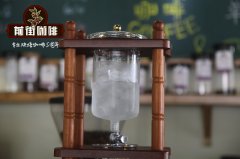What are the varieties of coffee grown in Colombia? What are the flavor characteristics of Colombia? Main

Professional coffee knowledge exchange more coffee bean information please follow the coffee workshop (Wechat official account cafe_style)
What are the varieties of coffee grown in Colombia? What are the flavor characteristics of Colombia? What are the main coffee producing areas?
Colombian coffee is one of the few individual coffees sold in the world under its own name. In terms of quality, no other coffee has been so highly rated by coffee drinkers. It also has a very good name, called "Emerald Coffee" Columbia super-grade aroma rich and thick, with clear high-quality acidity, high balance, sometimes nutty, memorable. In terms of appearance and quality, the Columbia Super Class is quite excellent, just like a woman's vaguely charming, charming and just right, memorable.
The main coffee producing areas in Colombia are: Huila (San Augustin), Narino, Tolima, Popayan (Cauca), Valle de Cauca, Meta, Antioquia (Medellin), Magdelena (Sierra Nevada), Boyaca, Santander (Bucaramanga) and so on. There are about 700 million coffee trees in Colombia, 66% of which are planted in modern plantations and the rest on small, traditionally run farms. The main varieties include Kaddura Caturra, Colombia Colombia, Tibica Tipica, Bourbon Bourbon, Elephant Bean Maragogype, and Tabi. Farms and cooperatives throughout the country, big or small, are distributed in more than 500000 municipalities and 14 major coffee-producing areas. A total of 2 million Colombians depend on coffee cultivation for a living, contributing 12.5 per cent to gross domestic product. In the early 1960s, coffee production was about 600 kg per hectare, but now it has increased to about 900 kg. The farm can reach 2500 kilograms. Colombia established the National Coffee Management Association in 1927, which is responsible for quality supervision. Although the association is a private organization, it acts on behalf of the government. In addition to organizing the industry, the association is also responsible for the control of coffee prices and responsible for health care, education, road construction, hiring planting technicians, conducting investigations, supervising product quality, and directly managing the export business of 50% of the total export volume. Hire marketing staff and other duties.
The main varieties of coffee in Colombia are Kaddura and a species endemic to Colombia, as well as a small number of Tibica species. Most of the main producing areas, except for the lower altitude of Bucaramanga, are distributed on a mountain of about 1200 meters.
Mainly according to the size of raw beans.
Grade
Description (1 item = 1 stroke 64 inches)
Maragogype Malago Gippi, large size variety
Supremo (Super level)
The size of more than 17 mesh is called SUPREMO, which is the highest grade in Costa Rica.
Excelso Extra (top grade 1): less than 16 mesh, and not more than 5% under 14 mesh
Excelso EP: less than 15 mesh, and not more than 5% under 14 mesh
U.G.Q. (Usual Good Quality): less than 14 mesh and not more than 1.5% less than 12 mesh
Colombia's mild climate, humid air, and diverse climate make it a harvest season all year round, with different kinds of coffee ripening at different times. What they grow is Arabica coffee beans of unique quality, and the coffee made from this coffee bean has a rich taste and endless aftertaste, which can be called fine coffee. Nowadays, many people equate "Colombian coffee" with "high quality" and "good taste". The world coffee is divided into two series, one is the "hard" coffee represented by Brazil, which has a strong flavor, and the other is the "soft" coffee represented by Colombia, which has a light flavor. The difference lies in the altitude of the producing area and the method of planting. Coffee is planted extensively in hilly red soil in Brazil and intensive cultivation in mountain black soil in Colombia.
The suitable climate in Colombia provides a real "natural pasture" for coffee. But people there do not deliberately emphasize their excellent growth conditions, they are more willing to hear people praise the superior taste of their coffee beans. They do not like to be judged that the reputation of Colombian coffee depends on its unique geographical location, and they want people to see their hard work and unremitting pursuit of quality, their good intentions for coffee quality and the great sacrifices behind them, and the gratifying changes in the quality of their coffee beans "growing with each passing day" and "keeping pace with the times". It is very difficult to do this.
Colombian coffee has a bitter experience. It is as clear and astringent as life, while bitterness is necessary in life. The last fragrance at the root of the tongue is a thorough recollection of the past. Looking back on the hardship in the past, I will feel its sweetness and warmth even more, and I want to let the mood stop in the consciousness that begins to awaken for a long time. Suffering is pain, clear and quiet, the last fragrance has become a kind of spiritual victory.
The sour, bitter and sweet flavors of Colombian premium coffee match just right. Unique fragrance, after drinking, the aroma fills the whole mouth. Exhale the aroma from the mouth again from the nose, the smell is very full. Perhaps you will find it too domineering, because it will occupy your taste buds, your mind and even your soul as quickly as possible. Why resist it? The life we live in is full of sour, sweet, bitter and astringent, so let the smell of coffee take away everything in the world. What we enjoy is not just a cup of coffee, but also the quiet moment that coffee brings to us.
Colombians' relentless pursuit of coffee quality can only be described in one word: seriousness. Except that is serious, he is still serious. A widely read example of this is that Colombians can replace bourbon coffee trees with fast-growing and high-yielding Arabica coffee trees. But Colombians are not going to do anything until the quality of coffee beans grown from Arabica coffee trees is confirmed, even if they are willing to hand over their coffee production ranking from second in the world to Vietnam, which only grows robastian coffee.
Qianjie recommended cooking:
Filter cup: Hario V60
Water temperature: 88 degrees
Degree of grinding: small Fuji degree of grinding 4
Cooking methods: the ratio of water to powder is 1:15, 15g powder, the first injection of 25g water, 25 s steaming, the second injection to 120g water cut off, waiting for the powder bed water to half and then water injection, slow water injection until 225g water, extraction time about 2:00
Analysis: using three-stage brewing to clarify the flavor of the front, middle and back of the coffee. Because the V60 has many ribs and the drainage speed is faster, when the water is cut off, it can prolong the extraction time and better extract the nut and chocolate flavor of the tail section.
Flavor: changeable layers, clean as a whole, thin taste, long-lasting caramel sweetness in the finish.
Important Notice :
前街咖啡 FrontStreet Coffee has moved to new addredd:
FrontStreet Coffee Address: 315,Donghua East Road,GuangZhou
Tel:020 38364473
- Prev

How do Colombian [Kaddura] coffee beans taste? How to grade Colombian coffee beans?
Professional coffee knowledge exchange more coffee bean information please follow the coffee workshop (Wechat official account cafe_style) Colombian [Kaddura] coffee bean flavor? What is the grade of Colombian coffee beans? What coffee producing areas are there in Colombia? The geographical environment of Colombia is excellent: low latitudes, high elevations, coffee trees are mostly planted in the Andes, elevation 1
- Next

What is the flavor and taste of the Medellin coffee producing area in Colombia? How is coffee production in Colombia?
Professional coffee knowledge exchange more coffee bean information please follow the coffee workshop (Wechat official account cafe_style) the flavor and taste of Medellin Coffee producing area in Colombia? How is coffee production in Colombia? The story of growing coffee in Colombia? Colombia is the second largest producer in the world, accounting for 12% of the world's total output, although it ranks lower than Brazil.
Related
- Detailed explanation of Jadeite planting Land in Panamanian Jadeite Manor introduction to the grading system of Jadeite competitive bidding, Red bid, Green bid and Rose Summer
- Story of Coffee planting in Brenka region of Costa Rica Stonehenge Manor anaerobic heavy honey treatment of flavor mouth
- What's on the barrel of Blue Mountain Coffee beans?
- Can American coffee also pull flowers? How to use hot American style to pull out a good-looking pattern?
- Can you make a cold extract with coffee beans? What is the right proportion for cold-extracted coffee formula?
- Indonesian PWN Gold Mandrine Coffee Origin Features Flavor How to Chong? Mandolin coffee is American.
- A brief introduction to the flavor characteristics of Brazilian yellow bourbon coffee beans
- What is the effect of different water quality on the flavor of cold-extracted coffee? What kind of water is best for brewing coffee?
- Why do you think of Rose Summer whenever you mention Panamanian coffee?
- Introduction to the characteristics of authentic blue mountain coffee bean producing areas? What is the CIB Coffee Authority in Jamaica?

